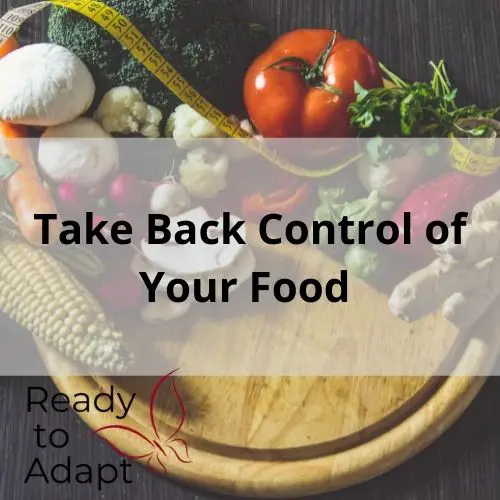“Resilience cannot exist without hope, for it is the hope of situational improvement that carries us through the most difficult of circumstances “
Resilience to a changing world is more important today than ever before. Permaculture teaches us to make the smallest change for the greatest effect. Small, simple, slow solutions to our problems. David Holmgrens’ Permaculture Principles can assist us to look at our personal resilience banking. Resilience can only exist when there is hope. Hope predisposes that things can get better or improve. So resilience and permaculture fit perfectly together.
Here are 12 steps to build personal resilience into your life using Permaculture Principles.

Observe and Interact: This simple statement encourages us to slow down for a moment and really look at ourselves. What do we know? How do we feel? How do we interact with our surroundings and others we come into contact with? Really thinking about ourselves and our ability to be resilient right now is what this principle is about. It’s time to make a stock-take. So grab a pen and some paper! Write at the top of the page in two columns Strengths and Weaknesses. Sit quietly and ask yourself, what are your key strengths and weaknesses? Jot them down in the appropriate column. Don’t worry nobody need ever see it. This is just for you.

Catch and Store Energy: When first coined, this phrase was about making hay while the sun shines. In relation to personal resilience, it reminds us that we must practice a degree of self maintenance. That means we spend time looking after our personal, natural capital such as our health and mental well-being. If we do not recharge the batteries of the soul and mind then we run the risk of running out of puff when we need it most. So go ahead – book that day out with your bestie to have a facial or go for a long slow walk through the rain forest or on the beach. Recharge your battery as often as you can.

Obtain a Yield: The previous principle focuses on the need to care for existing personal, natural capital and making long term investments in our health and well-being. Obtain a yield reminds us that we must use that health and well-being to continue to provide for ourselves and our families in an efficient manner. So in this case, recharging our batteries allows us to be more creative and flexible in the ways we respond to and build our personal resilience. Gardening of the mind. We fertilized and prepared the soil – so what are we going to grow that will assist us in our goal of resilience. Maybe you will take a self-help course or maybe learn a new skill, whatever it is, it must help you obtain a benefit.

Apply self-regulation & accept feedback: Applying self-regulation and accepting feedback is really about doing a self-audit. Your personal habits and behaviors, and the consequences of them, in your life and the lives of those around you, can have a massive impact. This is not meant to be a guilt trip nor a confessional but rather an honest look at your personal habits and behaviors and how they impact on you and that of those around you. Are you building your resilience capital or are you making constant withdrawals?

Use and Value Renewable Resources: This principle reminds us that all we do in building our personal resilience should be renewable. We talked in principle 2 about recharging our batteries, this didn’t mean we were going out to plug into the latest designer fashions. It meant that we were tending that garden of the mind to ensure that the outputs are there for us when we need them. Using and Valuing Renewable Resources is about making sure we are watering our relationships. We not only need to build personal resilience but by spending time building others we also by default build ourselves. This is truly renewable. But we must be sure that we continue to foster those good relationships.

Produce No Waste: Just as the previous statement is about good relationships, so is this one. We must be sure to not produce negative or bad relationships with others. Similarly, we must guard ourselves against negative thoughts and actions. Those negative things produce a lot of rubbish or waste in our lives. We need to get rid of them. Now I know that is most often easier said than done, so be kind to yourself and take small slow steps towards this principle. Be careful not to slip back into old habits though

Design from Patterns to Details: This may seem odd at first glance but you remember that problem back at Principle 1? You made a list of strengths and weaknesses, right? And in Principle 4 you did a self-audit of your habits and behavior. Well, my friend, this is where they come together. Look back at your lists. Are there any emerging patterns? Go on, be honest with yourself. Take a really good look at those patterns. Can you look at them from another perspective? Turn them around – reword them. Now choose just 1 – what can you do to change or improve it. Look for ways that will help you to move towards the resilience you are striving for.

Integrate rather than segregate: Many hands make light work as the saying goes. This principle teaches us to ask for help and to offer it to others. Become part of something bigger, you have done such a great job on your own but what if you had help – what would that look like? The other way to look at this principle is, What can you do that will integrate your newly designed resilience into your life even more? Or maybe you can help someone else with turning their problem into a solution.

Use small and slow solutions: Nobody wants you to rush out and turn your world upside down. That is not sustainable nor is it practical. We all know that the best way to embed change into our life or build on a good habit is to take it slow. There is no need to rush. You don’t have to race out and buy or read every self-help book but take small slow steps. Make sure they are right for you and fit your character. Better yet make sure the steps you take are building your personal resilience capital.

Use and Value Diversity: Spread the love. Don’t put all your effort into just one thing. Remember, to build resilience you want to use renewables such as strong relationships. Hugs are fantastic resilience builders but may not be appropriate in all situations – so get creative. Pick some flowers, make a herb garland for your neighbor, whatever it takes to build your resilience bank balance.

Use Edges and Value the Margins: Don’t think you’re on the right track just because it’s a well-beaten path! A word of warning to keep you going in your right direction. Just because your workmate has had success with xyz program doesn’t mean it is right for you. In everything, always stay true to your original self. If it doesn’t feel right for you – it probably isn’t. That is not to say it is wrong for someone else, just not right for you. Look to the edges and margins – there is often a pearl of wisdom or a sweet spot just for you. Be brave – I know you can do it.

Creatively Use and Respond to Change: The butterfly, on which this blog is based, reminds us that not everything is as it seems. The caterpillar that is chewing on your cabbage will one day be a beautiful butterfly that you welcome to your garden. The same is true with the process of change in any field. People do not embrace changes, we like things to be predictable. So if you are experiencing resistance from your family or friends, maybe its you that’s resisting. Remember that change is often a good thing and if we take control of the change as in the principles listed above then we can become the champions of our own destiny.
This article was written and composed by Kym Wilson of Ready to Adapt. If you would like to know more about Permaculture Inspired Resilience, please click the link above.
Acknowledgment must go to David Holmgren, co-founder of Permaculture. His work – Principles and Pathways Beyond Sustainability have been the inspiration for this work. The 12 Principles David writes about have been used to describe and educate about Resilience. Thank you, David.
The work of Brenna Quinlan in illustrating these Principles is also gratefully acknowledged.



